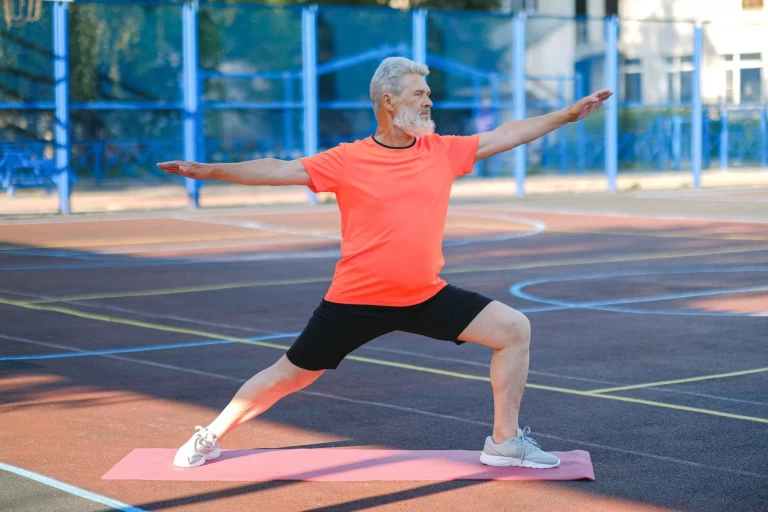
Breathing difficulties are common and can be the result of structural spinal problems, asthma, COPD, and anxiety, and are associated with other health problems. Anyone who has suffered from breathing difficulties understands the anxiety and fear that accompanies the terror of- am I going to suffocate?
However, millions of Americans live with breathing difficulties lifestyle modifications, and emotional trauma that can associate with it. In this article, we will discuss some of the common breathing difficulties that people suffer from, their mechanisms, and natural things you can do to help your body's healing system recover lost health.
Breathing Difficulties - Musculoskeletal Causes of Shortness of Breath and Decreased Lung Volume
Breathing difficulties can often arise from musculoskeletal tightness. The diaphragm is a round muscle that transects the lower abdomen just beneath the bottom boundary of the lungs. The diaphragm is responsible for drawing air into and out of the lungs. When it contracts it moves upwards causing exhalation of the lungs.
When it relaxes it descends and pulls air into the lungs. The diaphragm is controlled by a nerve called the phrenic nerve. This nerve is part of the autonomic nervous system and breathing is an automatic process. Breathing occurs whether you are conscious of it or not.
However, since it is controlled by the central nerve system, structural misalignments in the neck can interfere with normal respiration causing breathing difficulties. Shortness of breath is often due to the spasm of the diaphragm.
Just as your shoulder muscle can spasm so can your diaphragm. When a muscle is tight it is not able to perform its job as well which can result in breathing difficulties.
Tight Intercostal Muscles and Breathing Difficulties
Other muscles that are important to breathing are the intercostal muscles. These muscles also are responsible for the expansion and contraction of the rib cage. The intercostal muscles can also become spasmodic like any other muscle in the body.
If intercostal muscles become tight they can limit the expansion and contraction of the rib cage limiting lung volume capacity. Several research studies in the scientific literature show correcting upper cervical spine misalignments can increase lung volume capacity.
One of the mechanisms involved in the results of these studies would indicate that correcting upper cervical spine misalignments positively affects the nervous system's ability to control the diaphragm and intercostal muscles which affect lung volume. (1)
Breathing Difficulties During Pregnancy
It is common for women who are pregnant to experience breathing difficulties. It is obvious that as the fetus grows the changes that occur due to increased belly size have a structural effect on the spine. Beyond the obvious morphological changes that occur during pregnancy, the stresses and strains that are exerted by a 25-pound belly on the spine can exacerbate an underlying structural weakness that was dormant before pregnancy.
The combination of upward pressure of a growing uterus and spinal stress can both combine to increase the likelihood of breathing difficulties during pregnancy. Regular upper cervical chiropractic visits can help minimize irritation to the nervous system by maximizing structural and neurological function.
Breathing Difficulties in Kids
Many conditions can cause breathing difficulties in kids Asthma is the most common condition in children that affects breathing. Asthma can be significantly helped by upper cervical chiropractic care.
Because the respiratory centers are located in the brainstem( base of the skull) spinal misalignments can aberrantly impact brain stem function and be a causative agent in the genesis of asthma and other childhood health problems.
Breathing Difficulties in Adults
Several conditions result in breathing difficulties in adults. Asthma, COPD (chronic obstructive pulmonary disease), and emphysema are the three most common causes of breathing difficulties in adults.
Baby Breathing Difficulties
Breathing Difficulties shortly after birth is common. As the new infant transitions from a wet environment to a dry one, the transition can often be difficult. We are not going to go into depth on infant breathing difficulties but wanted to mention it because it often can relate to birth trauma of the upper cervical spine with forceps and vacuum extraction deliveries.
It is not well known that sleep difficulty and breathing difficulties at night are highly correlated to migraine headaches. There are multiple reasons why breathing difficulty at night can be a causative agent in migraine headaches.
Migraine Breathing Difficulties
Having breathing difficulty at night can inflame and irritate the sinus membrane. Sinus membrane nerve endings are highly correlated to migraine headaches when they are irritated. Snoring induces an irritating effect on the sinus cavity and can affect the sensitive nerve endings in the tissue located in the sinuses.
“For example, if the nerve endings in your sinuses are suddenly extra sensitive, then you’ll feel pain, pressure, nasal congestion, and post-nasal drip. It’s been shown that the vast majority of chronic sinus headaches and pain sufferers have a variation of a migraine, with normal CAT scans. Many people are placed on oral antibiotics empirically when there’s no bacterial infection.
The central nerve system composed of the brain, the brainstem, the spinal cord, and spinal nerves control and coordinate ALL body functions. Health is the byproduct of the body functioning at one hundred percent. Since health is a function and the nervous system controls function, monitoring whether the nervous system is functioning optimally or not is paramount to health.
When a new patient visits an upper cervical chiropractor a history and exam are taken which tells the doctor if you have a spinal misalignment and its location. Once determined precision X-rays are taken to view the joints in the neck to measure the direction and magnitude of spinal misalignment.
This information is then used to make a precise spinal correction that involves no twisting, popping, or pulling of the neck. Once corrected, the patient is monitored over time to ensure the interference is clear or not. The goal of upper cervical care is to keep each patient free of nerve interference so the body can heal and repair to the best of its ability and normalize function and health.



